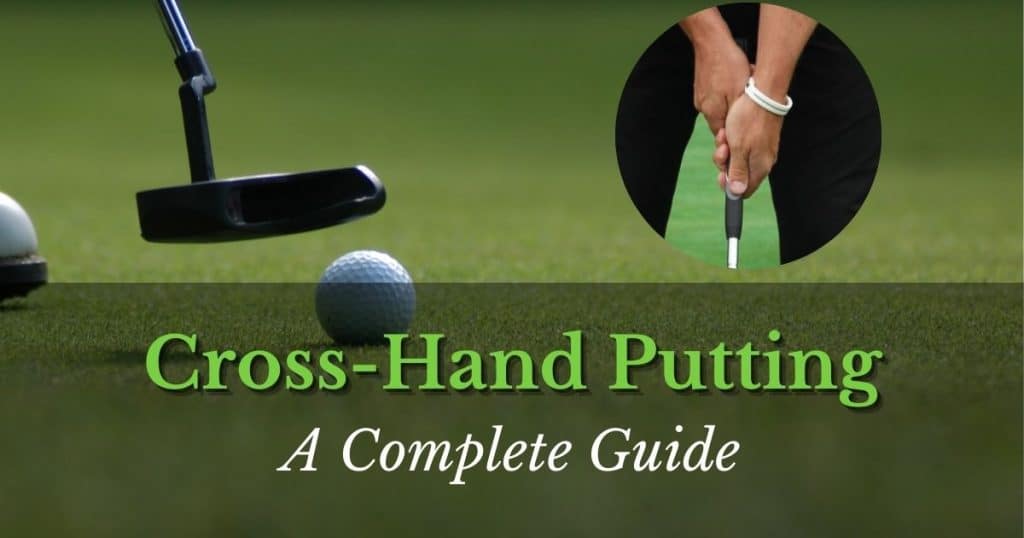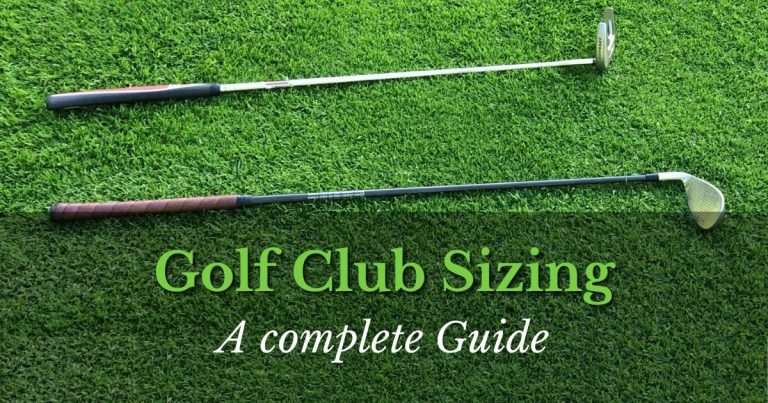When I reflect on my years trying to play golf professionally, I always look back to the mistakes I made on the putting green. The phrase “Drive for show and putt for dough” could not be any more appropriate now. Particularly when Instagram and Twitter are full off long drive monsters and ball speeds that are faster than Formula 1 cars!
What you don’t see is a long putt monster or many gurus on the putting green, taking up the bandwidth.
Yet putting is fundamentally the most important part of the game of golf. I will make you a promise now. I CAN NOT reduce the number of tee shots that you will take next round. However, what I can do is give you tools and tricks to reduce the number of putts you have. Taking 5 extra putts can be the difference of a round in the 80s or towards the mid-70s.
Over recent years there have been many new and inspired techniques to enter putting. However, one maverick like technique that continues to perform is the Crosshand Putter Grip.
PGA tour players that Use Cross Handed Putting
For example, Jordan Spieth is a renowned user of the cross handed putting grip. Between 2015 – 2017 he won 3 majors, the FedEx Cup and PGA Tour player of the year. In 2016 he was ranked 2nd in stroke gained putting and 9th in 2017.
Another world-famous player, Rickie Fowler had a purple patch a few years earlier. In an interview with Golf Digest, he explained that switching to left-handed low for short putts gave him far more control over the clubface. He made the switch a week before the Wells Fargo Championship, only to find himself lifting the trophy.
During the course of the season many other PGA Tour players will use the cross hand putting grip to help them keep the ball on line, this includes Billy Horschel, Kevin Chappell and we have seen Phil Mickelson use it.
Fundamentals of Cross-handed or Left Hand Low Putting
To begin with, hold the putter in your left hand, it should fit nicely in the palm of your hand. With the ball position slightly forward you will notice if you stand over a golf ball the putter should be an extension of your left arm, as all should run in a straight line. Then place your right hand onto the putter to use as a stabiliser. That is one of the benefits of using this grip, the putter is an extension of your left arm. This boosts control, particularly over short to mid length putts.
Other fundamentals include keeping your left arm locked into your torso and letting a rocking motion of the shoulders back and through, motivate the stroke.
What are the benefits of Cross-Handed Putting?
Shoulder alignment
In this putting style, your left shoulder will be slightly lower at address, as your left hand reaches lower on the grip. With the ball position slightly forward than normal you can level those shoulders back up but you are now on the upward part of the pendulum you swing on. What this is in aid of is to encourage the putter to move upwards through impact. This encourages more roll or topspin as the clubface grips back of the ball, pushes it upwards and sends it towards the hole.
Hand movement
Using this style, it is easier to have awareness of how much the left hand plays a part through your stroke. A conventional grip may allow subtle involuntary movements of the wrist. This can change the loft at impact of the putter face which in turn changes how the putt releases from impact. However with the left arm leading the movement and running in a straight line through the putter, it’s easier to keep it all “locked” and reduce that variance in hand movement. This will allow you to present the putter loft at impact, with a lot more consistency and improve the distance the ball travels from your clubface.
Accuracy
In a similar manner to loft, some players find the left-hand-low grip to be more accurate because of the reduction in hand movement and clubhead manipulation. As much as loft, the face rotation may be reduced. In addition to that, the rise of the left arm and more upward blow on the ball is likely to be working down the line of the putt as opposed to around the body of the golfer which in turn adds to accuracy.
Roll on the ball
As previously mentioned, the ball may roll better for some with a crosshand. If a ball launches along a putting surface with no spin, it travels neutrally and the ground below it grips the dimples underneath and then it starts turning over itself and rolls. This may be considered as skidding. One putt to the next, this skid can give varying distances depending on when the ball grips the grass on its journey. However, left hand low putting can encourage topspin from the putter face because it can make the ball roll much earlier in its travels. This whole idea is very important in distance control which is a very important aspect of putting. When the ball doesn’t go in, how long is the next putt? And how much control did you have over that?
Common Problems with Crosshand Putter Grip and How to Overcome
Left Elbow Coming Off
Quite a common issue with first-timers is with the left elbow coming off during the shot. For LHL to work, your left shoulder should take the lead while your arms should follow it. If your left arm loses contact with your torso, it isn’t happening. A quick fix to this error is the one hand practice drill. Start with tucking your glove or even a ball in your left armpit (right armpit for left-handed players) and right hand behind your back. Yes! Practice with one hand for 10-15 minutes and try not to drop the glove. Now you should start getting it right.
Knock On Effect
While the cross handed putting grip can encourage an upward blow on the ball to encourage roll and topspin, this can have a knock on effect in the strike from the putter face. The cure for this is a repeatable ball position, make sure it doesn’t creep too far forward or you can have a marker, like the logo on your shirt to get the same ball position as often as you can.
A Thin Strike
Another issue that could arise for some is a “thin” strike that makes contact with the bottom edge of the putter face. This can rebound and grip the ball differently than the larger, more attractive part of the face. If the ball gets too far forward it can start happening so keep an eye on it.
This will be particularly relevant if your putter has soft material inserts in the middle of the face and a harder material housing it. Similarly if there is anything in the face like grooves, they are designed to help roll the ball so we want to make contact with them.
You can get things like chalk spray on your clubface or even water on the ball on a dry day if you want to test where you strike the face yourself and get some feedback.
Practice Makes Perfect
While trying a Crosshand putting for the first time, it is expected that you’ll get inconsistent speed but you might see significant improvement with direction. Keep practicing till you find the right balance.
If you’re wondering what kind of grip you should use for this style, then the answer to that is simple; whatever feels natural to you. If your hands or wrists get too involved, then a slightly larger grip and reduced taper can be worth a try. Consider checking our article on Best Golf Grips while we are on the topic.
Final Thoughts
There we go, the benefits of putting a cross hand has become more apparent over recent years, with more golfers taking it up. Now is a perfect time to practise your technique before the season starts! Good luck.





